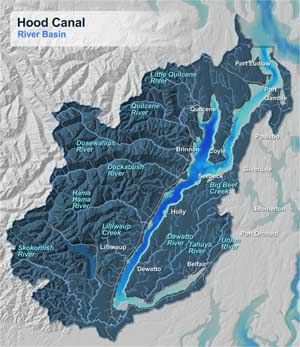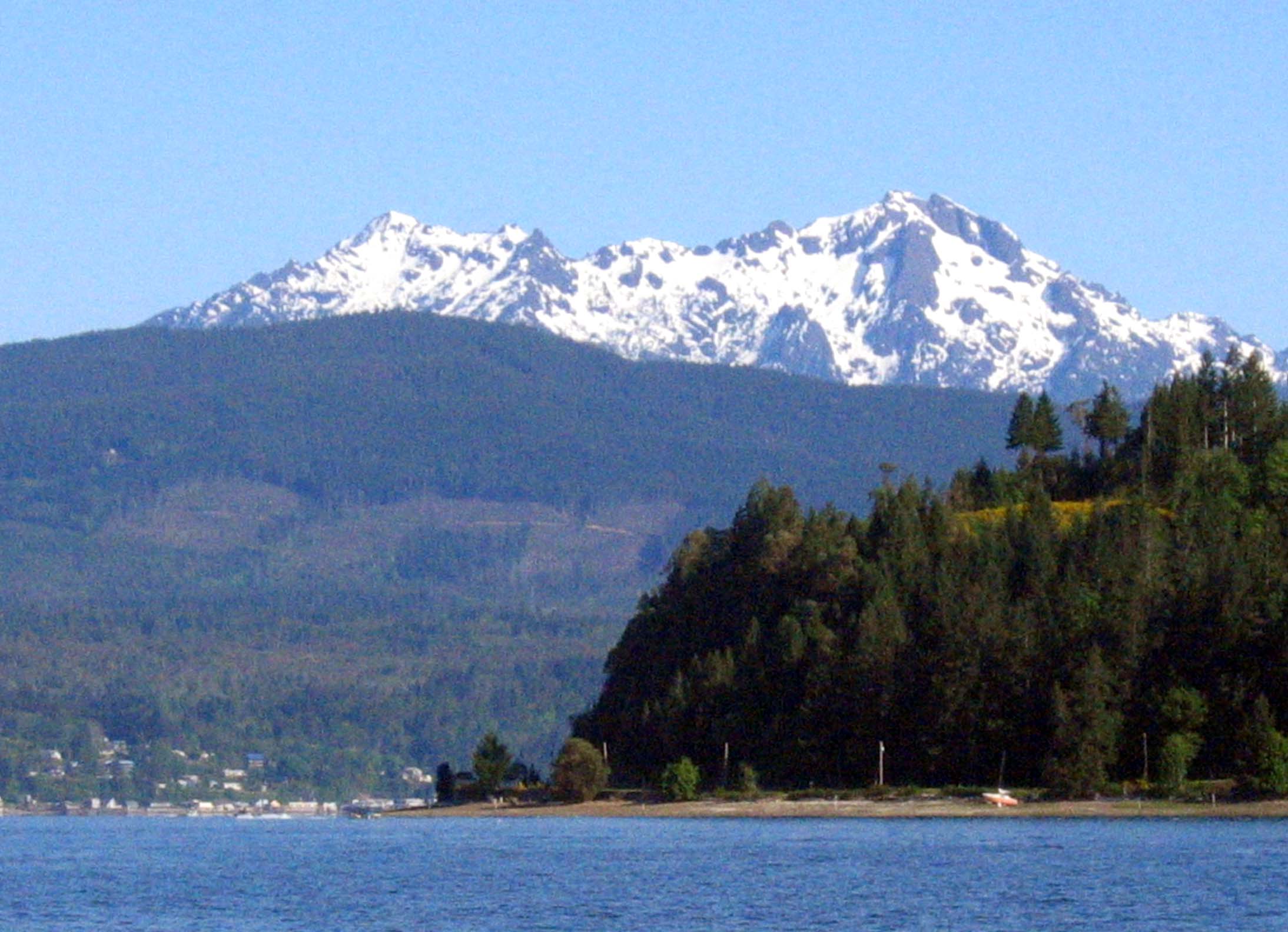
| The sheer beauty and pristine appearance of the Hood Canal is representative of the natural wonders that characterize the Pacific Northwest. Despite its pristine appearance the Hood Canal is plagued by a serious problem. Human activity is one of several factors impacting overall water quality, particularly dissolved oxygen concentrations. The canal has a demonstrated history of low dissolved oxygen conditions dating back to the 1960's. The area has attracted increased growth and development, as well as increases in overall human activity. The Hood Canal watershed has approximately 54,000 residents with nearly 24,800 onsite septic systems. The following is a breakdown of the primary nitrogen sources associated with human activity: 60% human sewage, 14% agricultural manure, 13% chum salmon carcasses, 11% storm water run-off and 1% forestry. Between 100 to 300 tons of nitrogen are added into the canal yearly (Fagergren, 2004). Initially, the nitrogen stimulates plant growth adding oxygen to the water. When the algae begin to die and decompose they consume oxygen that would otherwise be utilized by marine organisms for survival. | 
|
The unique bathymetry of the canal also plays a critical role in overall water quality, as well as the dynamics of water movement. The Hood Canal is not really a canal and is more appropriately described as a long, narrow, deep fjord-like body of water. The canal is approximately 90 km long, 1-2 km wide with deep sub-basins at 180-200m and relatively shallow areas of less than 40m at the Great Bend (Stout et al., 2001). It is partially isolated by a sill that is 45.7m deep with an entrance depth greater than 150m. Other than tidal currents, currents within the Hood Canal are slow, most likely due to the fact that the basin is a closed fjord with an entrance sill that tends to increase water retention time making it difficult for polluted waters to dilute and flush (Hood Canal Dissolved Oxygen Program, 2005). The average flush time for the canal is between 6-12 months. In addition to a slow exchange rate, the waters of the Hood Canal tend to be strongly stratified not allowing for vertical mixing. These factors influence the canals ability to respond and adjust to increased contributions from human activity.
In recent years, the low dissolved oxygen conditions have become more widespread even within deeper waters, lasting for longer periods of time with levels remaining low year-round and producing more severe results for aquatic life. For example, significant fish kills were observed between 2002 and 2004 indicative of hypoxic conditions. A historical comparison of dissolved oxygen concentrations within the deep waters of the southern portion of the Hood Canal was at an all time low in 2004. In general, the dissolved oxygen concentrations are at their lowest in recorded history (Hood Canal Dissolved Oxygen Program, 2005). The purpose of this survey was to document vertical water column properties (temperature, salinity and density), plankton distributions, nutrient distributions, chlorophyll, light transmittance and dissolved oxygen concentrations. It was expected that stratification would be seen in measurements of temperature, salinity and density. It was also expected that as you proceed further into the canal the dissolved oxygen levels would decrease, with the Great Bend to Lynch Cove transect recording some of the lowest levels. This field report will also provide a comparison of dissolved oxygen collected in the Hood Canal in 2006 to historical data as well as provide measurements for the Hood Canal Salmon Enhancement Group, Washington State Department of Ecology, and the University of Washington.


